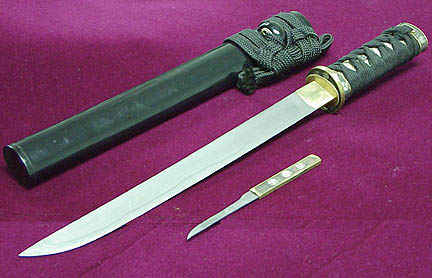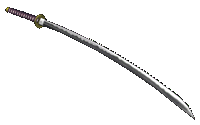WEAPONS OF ANCIENT
JAPAN
Today, the katana is the most well-known of
Japanese weapons.
However, it was 17th century when Samurai
began to consider the katana as the spirit of Bushido .
Before then, bows and spears are the spirit
of Samurai.
Age of Bow
Until 16th century, bows and arrows were the
most potent weapons for the Bushi.
There was the art of mounted archery, called
Bakyujutsu , which consisted of archery and horseback riding.
Many styles of Bakyujustu existed, and among
them, Ogasawara style was the most famous and respected.
It was not just the skills of mounted archery,
but also decorums and etiquettes for Samurai.
The most famous legend about bow is perhaps
that of Nasu-no-Yoichi , a soldier of Minamoto no Yoshitsune.
Age of Spear
In 17th century, a wrecked Portuguese ship
drifted ashore at Tanegashima island, and the musket was brought into Japan.
The musket was much far powerful than bow,
of course.
Oda Nobunaga saw it as the key for victory,
and ordered to produce it with concerted efforts.
He won numerous battles with his Ashigaru
, light infantry battallions equipped with muskets.
As a result, the importance of archers declined.
In the Civil War Era, samurai used spear not
to impale but to beat enemies. All of them wore heavy armor.
They swung their spear and knocked enemy Samurai
down from horseback.
Thus a Samurai's strength was equal to his
muscle power in those days.
Age of Sword
After Tokugawa Ieyasu established the Edo Shogunate
in 1603,
the Shogunate became so strong that no major
battles occured until 19th century.
Since there wasn't any war, armor was seldom
worn by Samurai and the spear was also abandoned by Samurai and the sword
took its place.
Skill became more important than strength,
thus kenjutsu, the art of sword-fighting, flourished.
Samurai came to consider the sword as the
spirit of Bushido.
They always equipped themselves with two swords,
the katana and the wakizashi.
The samurai wore two swords ( daisho ). One was long; the other short.
The long sword ( daito - katana ) was more than 24 inches. The short
sword ( shoto - wakizashi ) was between 12 and 24 inches.
The samurai often gave names to their swords and believed it was
the "soul" of their warriorship.
The oldest swords were straight and had their early design in Korea
and China.
The samurai's desire for tougher, sharper swords for battle gave
rise to the curved blade we still have today.
The sword had its beginning as iron combined with carbon.
The swordsmith used fire, water, anvil and hammer to shape the world's
best swords.
After forging the blade, the sword polisher did his work to prepare
the blade for the " furniture " that surrounded it.
Next, the sword tester took the new blade and cut through the bodies
of corpses or condemned criminals.
They started by cutting through the small bones of the body and
moved up to the large bones.
Test results were often recorded on the nakago ( the metal piece
attaching the sword blade to the handle ).
The shorter of the daisho.
The wakizashi is used as a secondary weapon, as well as for committing
seppuku/harakiri in battle.

Tanto / Aikuchi
Basically a pocket-knife, but in the hands
of a skilled user, this weapon can also be quite deadly in close-combat.
It can be used as a throwing weapon as well.
[ BACK
TO THE MAIN PAGE ]
![]()


